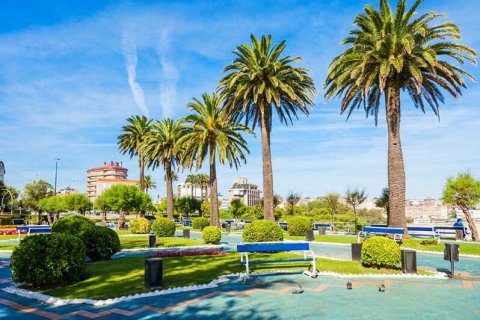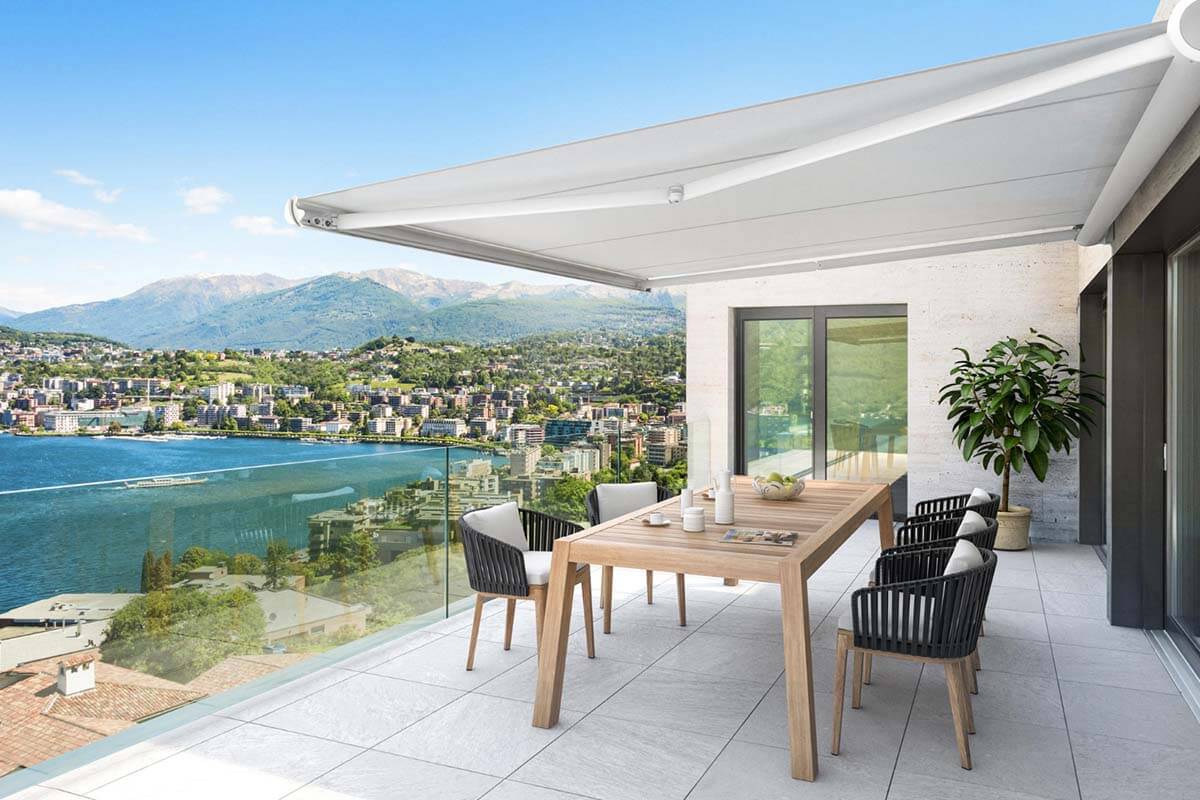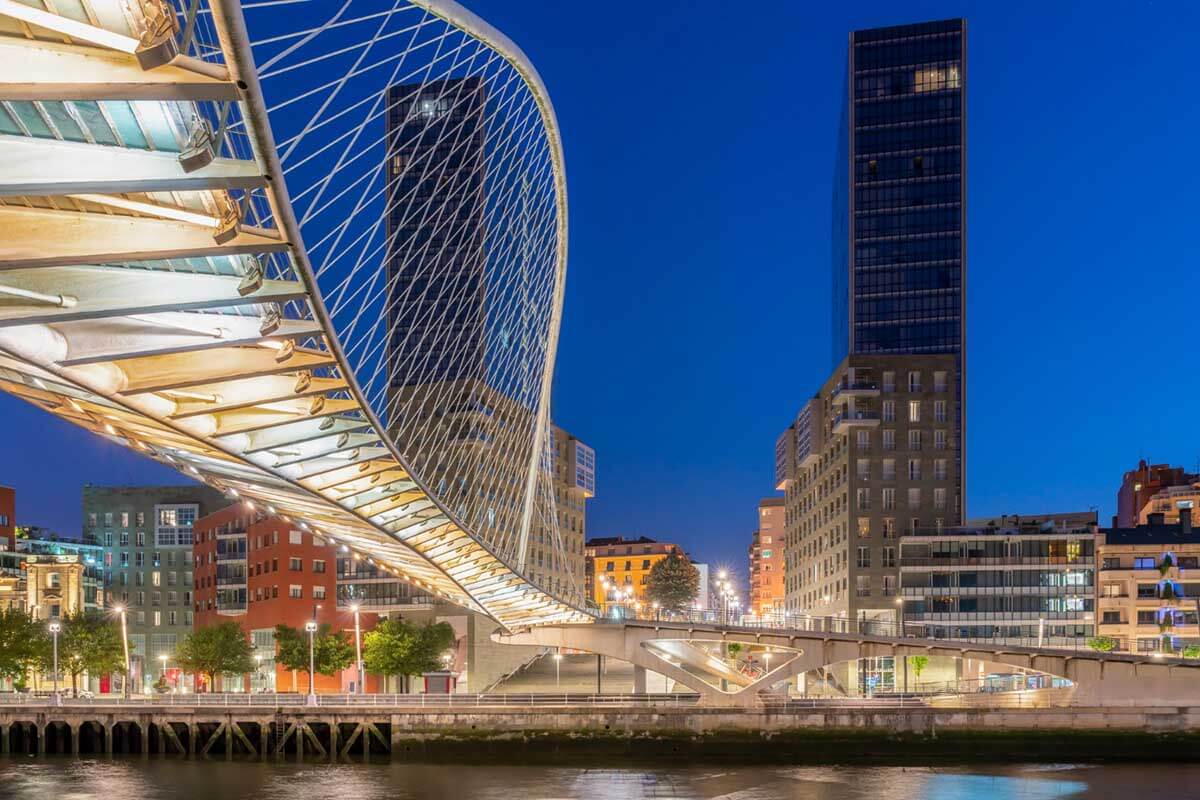
Is there a pandemic-resistant city model? Does this question include public health, physical form (size, structure or density) or material elements (infrastructure, buildings, public spaces)? What urban innovation can we expect based on the lessons learned from the crisis? Let us try to answer these questions in our article.
The coronavirus will force cities to reinvent themselves as this is critical in creating wealth, sharing ideas and ensuring a safe future.
Content:
- A self-sufficient city project
- Urban morphology
- Work centers
- Housing
- Housing and social habitats after the pandemic
- Big shopping malls in the past
- The role of technology
- Green areas and cars
- The most important factor is improvement
- Instead of a conclusion
- We will help you choose property in Spain
A self-sufficient city project
During the quarantine, many architects from all over the world were actively developing projects for a city of the future. Let us consider the most exciting version from the Spanish architect Vicente Guayart who created the “self-sufficient city” Xiong’an (China) project. His ideas were reflected in numerous subsequent developments of “cities of the future”.
For example, in Valencia, where many projects are aimed at combatting climate change and fighting crises, the architects created a zone of 4 blocks with wooden buildings. It is a much more sustainable material than cement and follows the principles of a new circular bioeconomy.
This development includes residential buildings, offices, a public swimming pool, shops, a market, a kindergarten, an administrative center and a fire station. However, perhaps, the most exciting thing is that it is a new urban model in which people can live, work and rest in their environment and, during periods of health, energy or food crises, adequately respond to all kinds of challenges.
Thus, this miniature city can produce food thanks to the greenhouses located in buildings to generate energy from their sloping roofs. In addition, there are small digital industry facilities on the ground floors equipped with 3D printers which allow for the production of every day and even sanitary items such as face masks.
In addition, all houses have a spacious south-facing terrace that acts as a thermal regulator and, of course, is a virtual space during periods of isolation. Inside the house, there are telecommuting areas and a 5G zone.
Vicente Guayart notes: “We developed this project during the quarantine when the whole team was working from home and decided to include all those aspects that could make our life better so that a new standard could be defined and applied in China, Spain or any country in the world”.
“Kilometer 0 Residential Buildings” have emerged as winners among more than 300 projects from around the world. This project has defined a new standard for ecology and functionality based on an idea of self-sufficiency which will possibly herald the future of all our cities.
Let us list the characteristics of the city of the future where you can easily survive a pandemic.

Urban morphology
In order to avoid public transport, general mobility and large human gatherings as much as possible, urbanists will have to plan cities so that urban villas, various centers with all services, etc. are within walking distance.
This type of urban planning already laid out by Paris Mayor Anna Hidalgo - 15-minute cities - seems to be rapidly taking shape. There is a range of self-sufficient urban centers with shops, parks, cafes, sports facilities, and medical and work centers short bike rides or walks away. Large gatherings are usually kept to a minimum.
Work centers
Offices are becoming obsolete and the pandemic has forced the creation of new forms of work. Organizations must rethink their role in creating a safe, productive and supportive environment.
Spaces must be redesigned to maintain a healthy distance between employees. It raises the question of restoring human contact which is very important for productive work and exchanging ideas.
Some offices will be converted into housing.
Housing
In the Covid-19 era, living spaces have become rooms adapted for workspaces, classrooms, kindergartens and hospitals. Homes with well-defined spaces – a separate living room, dining room, kitchen and bedrooms - will become a thing of the past.
Living quarters were already in the process of transformation, becoming smaller and more expensive; however, this fundamentally does not meet modern requirements. According to Archdaily magazine, the principle behind the new home design is empathy. The new spaces will be smaller but are expected to be part of a cohousing project to meet the needs of their residents with interconnection. Shared open spaces will become paramount and living spaces will be radically changed.
Housing and social habitats after the pandemic
All these transformations are expected for the most globalized sectors of society. However, in cities with a heterogeneous social environment like Latin America, one more trend will have to be expected; imprisonment in class ghettos and increased security measures in the most privileged sectors. It is another trend that only emphasizes what has already happened.
Catherine Puckett, a researcher at the French Institute for Development Studies (IRD), said that mistrust and fear between neighbors usually reign in slums but the pandemic is transforming this model. People began to get to know, support and help each other. The responsibility falls on local governments not to lose this momentum. It encourages “environment social production” and the reproduction in the slums of the same scheme as in other parts of the city, autonomous units, must become better adapted to this new reality.
Big shopping malls in the past
Carlos Lachoz, an urban architect and professor at St. Paul’s University (Madrid), notes: “With the e-commerce revolution, there have already been changes in consumption habits that have now spread to all segments of the population and come to stay. Furthermore, now a pandemic comes and teleworking and social distance arise. All this makes it very difficult to garner interest in shopping centers.” Although they note that spaces like this will not disappear but be transformed into something new.
The role of technology
Technology has been an essential ally in crisis management from the outset. Technology is what draws the maps of the cities we will inhabit in the coming years, mainly thanks to artificial intelligence and big data which allows for more effective decisions in the epidemiological field.
For example, de-escalation phases were noted based on data on infections, deaths and hospitalizations combined with statistical and predictive methods based on artificial intelligence. This made it possible to plot curves and predict waves of infections. Telematic health care and applications to facilitate monitoring of possible exposure to the virus are also standardized. For example, Radar Covid, the official potential contact tracking app, will be fully operational in mid-September. It is an application that uses Google and Apple technology built into Android and iOS systems to find out who you have been in contact with without transferring any personal data or using geolocation systems. The app will detect people you have met at a distance of fewer than 2 meters for more than 15 minutes in the previous 14 days.
However, in 2020, “social distance” technology has shown that almost everything can be done in virtual mode. You hear words like “cocooning” or “the tendency for a person to communicate less and less and go to their home which becomes their power.” However, the isolation and widespread use of social media contribute to greater polarization and radicalization.

Green areas and cars
When the doors were opened after isolation, parks became places that were in the most significant demand. Moreover, there have never been as many cyclists on the streets and roads before. It was architectural ideas throughout the 20th century that reduced the quality of the environment due to many private vehicles and “disposable” objects (residential, commercial, and office). A large number of green spaces and a change in mobility are needed.
It seems that the end of squares or endless seas of sad grey tiles, for example, on Barcelona’s Diagonal Avenue, is approaching. Green cities are more remarkable and improve the health of their residents both physically and mentally. Singapore has become a global benchmark in intelligent buildings for vertical crops and encourages trade nearby. The new generation of skyscrapers will include all kinds of green surfaces on balconies, terraces and rooftops.
The private car will disappear to be replaced by public transport.
The most important factor is improvement
From the Thomas Mann House in Berlin, geographer expert Mireille Belil states: “Just as poles and concrete blocks can protect against terrorist attacks, cities can be planned to be resistant to viruses.” Metropolitan areas have constantly been reinvented and urbanization has continued throughout history, as Harvard urbanist and economist Edward Glaser points out in his book Triumph of the City.
Instead of a conclusion
If empires marked the 19th century and the 20th became the century of nations and states, then the 21st will be the city’s time to face epidemic and climate crises. The articles put forward a key concept to base reconstruction: sustainability. In other words, the ability of megacities to be warned and respond to new situations. That is, how to combine social reality with a climate scenario to create resilient, adaptable and inclusive spaces for all. “Bringing together the urban fabric and the people who shape it is key to delivering programs and initiatives that save and improve lives rather than deepen inequality,” says Amaya Zelaya, Technical Coordinator for UN-Habitat’s Global Resilient Cities Program which focuses on the ability to correct their own mistakes and rebuild spaces.
The urban challenge of the 21st century is to transform public spaces in favor of the community. If the street has been shaped for vehicles, post-pandemic cities will have to cut space for cars and provide more space for pedestrians and bicycles.
Efforts must be focused on making a model of life that we have invented and from which we can reap many benefits, both viable and sustainable. However, this is not easy. The future that awaits us is challenging. Changes happen in too short periods, allowing no time to react. New technologies, climate change, overpopulation, and pandemics are the challenges we must face and succeed in to build a promising future.

We will help you choose a property in Spain
Start your search for your dream home with Spain-Real.Estate. Here, you will find an extensive selection of housing in all regions of Spain from reliable developers. Use our advanced search options to find your perfect match.









